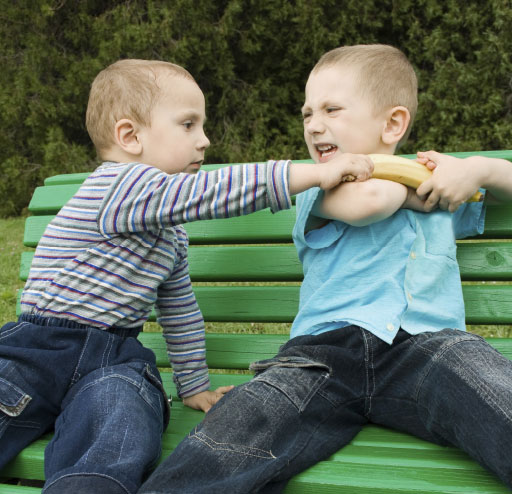 Download a printable copy of this article (PDF 335KB)
Download a printable copy of this article (PDF 335KB)
- It’s okay to get angry. Teach this explicitly.
- Explore how anger shows up in our bodies.
- Build simple and agreed plans for anger before it is out of control.
- First try – talk to the angry girls, walk with the angry boys.
- Have fun with anger in a non-threatening activity.
Schools are emotional institutions perhaps even the most emotional. On a single site we cater for potentially hundreds of young people whose brains are not yet fully formed! We try to teach them things they don’t always want to learn, and we report their progress to their parents or carers whose emotional connections with them can be complex.
There is little wonder that some conflict and tension exists in such environments. In any functional relationship or relational system there’s at least an element of conflict. Despite the insistence of many that conflict is a sign of a problem, healthy conflict levels are actually a sign of productive and high-expectation cultures. Conflict is therefore neither good nor bad – it just is.
“You will not be punished for your anger, you will be punished by your anger.”
– Buddha
In much the same way as we demonise conflict, we also tend to demonise the emotional byproduct of it. This is often anger. Increasingly I’m in conversations with teachers about how to handle anger in our students and to circuit break the seemingly inevitable transition that many students make from anger into aggression, or even violence.
The good news is that there are a handful of strategies that teachers of all learning phases can use to improve attitudes and responses to anger in their schools. Here are five of them:
- Teach students that it’s okay to get angry.
When I work with students and classes where anger is a problem, I often commence the lesson by asking them to chat about a question, “Is it okay to get angry?” Of concern but not surprise to me, is that about 60% of students from Year 1 to Year 10 will answer No. What this tells us is that they are viewing anger as a bad or unnatural part of themselves. And when matters of personal weakness emerge publicly the next awful emotion we experience is shame. Within this stigmatising shame, students’ behavioural responses to anger get even worse. Thinking that anger is bad is the first step to reacting poorly to it. Anger is normal – it’s simply the emotion that lets us know that something we value or care about has been compromised. It’s okay to get angry if my team loses a close match – it’s what I do with that anger that matters. - Know the physiological signs of anger.
Because anger is such a strong emotion, our ability to rationally process it with our neo-cortex, the thinking part of our brain, is compromised when anger is present. As such, males in particular struggle to understand that they are angry, even though it’s blindingly obvious to the rest of us. The positive is that anger turns up in our bodies when our brains can’t process it. Find out your students’ top three anger signals. Are they sweaty palms, tight fists, hot cheeks, shaking arms, stiff muscles, clenched teeth, wild heartbeat or stomach pain? Know these and you can recognise anger and respond appropriately, before it gets out of control. - Have a plan.
Because the neo-cortex can’t conjure a strategy when we’re angry, we need to have one or two ready in advance. One of my favourite anger case studies was a Year 7 student I shall call Ken. When I saw Ken’s fists tighten, I knew we were potentially only a few moments from a disastrous choice. So I kept a bag of rubbish under my desk and when Ken made a fist I handed him a piece (or the whole bag!) and asked him to run it outside to a bin fifty metres or so from the classroom. Ken and I both agreed in advance that this was a good strategy. Ken usually returned from his bin run with open hands. - Work with the stereotypes.
Anger is the one emotion processed quite differently by males and females. This is due to the connective tissue between the hemispheres of the brain being thicker in females than in males, allowing females to transfer feelings into words more effectively than males. As a result stereotypes emerge, such as the angry woman talking to a friend on the phone to resolve her anger and the angry man needing to chop some wood. Of course, there are exceptions to this rule but a good starting point is to have a chat with any girl who’s angry and listen well, but try walking and talking or kicking the footy with an angry boy. Work forward from there. - Have some fun with anger instead of demonising it.
In the wonderful resource A Volcano In My Tummy (Pudney W. and Whitehouse E. (1998) A Volcano in My Tummy: Helping Children to Handle Anger, New Society Publishers, 80 pages) there’s a story called Craig’s Angry Day where students can identify the moments where Craig breaks the book’s Anger Rules. In a nutshell, the rules are that it’s okay to get angry, however, its important to think. Don’t hurt yourself, don’t hurt others, don’t hurt property. Do talk about it. By practicing these rules and making a mantra to focus on them in silly voices, videos, plays, songs, posters or any other manner of creative pursuits, the students learn to embed this thinking in their neo-cortex for later use. The more they see, create and mess with the strategy in a non-threatening activity the more likely they are to get it right when under pressure.
None of this is a guarantee for success. Anger is an unpredictable beast and improving behaviour involves chronic relapses. We’re simply looking for an improvement which can be measured by a reduction in both frequency and severity of inappropriate responses to anger. If you’re getting that much, then you’re onto something. Stick at it.
References
Link to synopsis and purchasing info for this interested in “A Volcano In My Tummy”
Bibliography: Anger, Whitehouse, E. and Pudney, W. (2019). A Volcano in My Tummy. [online] Goodreads.com.
Available at: https://www.goodreads.com/book/show/854224.A_Volcano_in_My_Tummy







